malfunction
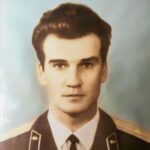
 Through the years, there have been a few men who made a conscious decision not to engage in an act of war. One such officer was submarine officer Vasili Arkhipov, who avoided nuclear war during the Cuban Missile Crisis in 1962. He wasn’t alone in seeing the insanity of launching a nuclear weapon, however. Another Soviet officer, Lieutenant Colonel Stanislav Petrov, made the same decision not to launch an attack that could have triggered a nuclear exchange on September 26, 1983. These two men basically disobeyed an order to launch their respective nuclear attacks, to their credit.
Through the years, there have been a few men who made a conscious decision not to engage in an act of war. One such officer was submarine officer Vasili Arkhipov, who avoided nuclear war during the Cuban Missile Crisis in 1962. He wasn’t alone in seeing the insanity of launching a nuclear weapon, however. Another Soviet officer, Lieutenant Colonel Stanislav Petrov, made the same decision not to launch an attack that could have triggered a nuclear exchange on September 26, 1983. These two men basically disobeyed an order to launch their respective nuclear attacks, to their credit.
Petrov was part of the Soviet Air Defense Forces, stationed at the Serpukhov-15 bunker near Moscow. September 26, 1983, started out as a typical Monday, but it would end as anything but a typical day. That day, just three weeks after the Soviet military had shot down Korean Air Lines Flight 007, Petrov was the duty officer at the command center for the Oko nuclear early-warning system. Suddenly, the system reported that a missile had been launched from the United States, followed by up to five more. For anyone who has seen the movie, “War Game” it would seem like a video game gone rouge. Apparently, it seemed much like that for Petrov too, because he judged the reports to be a false alarm.
While Petrov saw that this attack could not be, his superiors could not see that, and they ordered the counterattack. Petrov made the decision to disobey orders, against Soviet military protocol, and this could have meant grave consequences for him. This was Russia, after all. Nevertheless, Petrov is credited with having prevented an erroneous retaliatory nuclear attack on the United States and its NATO allies that could have resulted in a large-scale nuclear war. That war could have wiped out half of the population of the countries involved. Petrov had to truly believe that what he saw with his eyes, was not reality. Every second counted…attack or stand down!! Petrov chose to stand down!! An investigation later confirmed that the Soviet satellite warning system had indeed malfunctioned. There was no attack coming from the United States. The decision Petrov made, not to launch a retaliatory nuclear strike amid this incident, caused Petrov to be credited as having “saved the world” and by refusing to launch an attack, potentially saving millions, if not billions of lives.
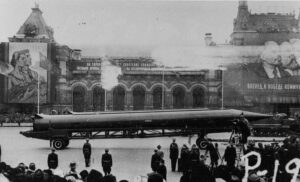
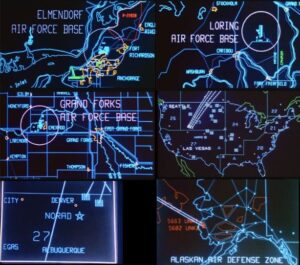 I don’t recommend that orders always be disobeyed or taken lightly, but I think it is vital for soldiers, officers, and even civilians, to consider the consequences on both sides, and maybe…just maybe, disasters can sometimes be avoided. Launching nuclear missiles, is truly a last-ditch act. It cannot be reversed, and if these missiles are launched, people will die. And in the case of Petrov, it would have all been for nothing.
I don’t recommend that orders always be disobeyed or taken lightly, but I think it is vital for soldiers, officers, and even civilians, to consider the consequences on both sides, and maybe…just maybe, disasters can sometimes be avoided. Launching nuclear missiles, is truly a last-ditch act. It cannot be reversed, and if these missiles are launched, people will die. And in the case of Petrov, it would have all been for nothing.
 We all know what it means to travel faster than the speed of sound…at least in theory. And most of us believe that it takes an airplane to accomplish that feat. That said, I wonder how Hollywood stuntman Stan Barrett felt when, on December 17, 1979, he blasted across a dry lakebed at California’s Edwards Air Force Base in a rocket and missile-powered car, becoming the first man to travel faster than the speed of sound on land. The reality is that there is no proof that he actually accomplished what he set out to do, which was to see if he could go faster than the speed of sound, because unfortunately, the radar scanner was acting up, and so Barrett’s top speed of 739.666 miles per hour by the most reliable measure, ended up being no more than an estimate. In addition, he only drove his rocket car across the lakebed once, while official record guidelines require that it be done twice. Also, none of the spectators heard a sonic boom as Barrett zoomed across the course. Nevertheless, it is believed that he did indeed break the sound barrier.
We all know what it means to travel faster than the speed of sound…at least in theory. And most of us believe that it takes an airplane to accomplish that feat. That said, I wonder how Hollywood stuntman Stan Barrett felt when, on December 17, 1979, he blasted across a dry lakebed at California’s Edwards Air Force Base in a rocket and missile-powered car, becoming the first man to travel faster than the speed of sound on land. The reality is that there is no proof that he actually accomplished what he set out to do, which was to see if he could go faster than the speed of sound, because unfortunately, the radar scanner was acting up, and so Barrett’s top speed of 739.666 miles per hour by the most reliable measure, ended up being no more than an estimate. In addition, he only drove his rocket car across the lakebed once, while official record guidelines require that it be done twice. Also, none of the spectators heard a sonic boom as Barrett zoomed across the course. Nevertheless, it is believed that he did indeed break the sound barrier.
Barrett, who was a 36-year-old stuntman and ex-lightweight Golden Glove champion, was introduced to auto racing by Paul Newman in 1971. At the time, he was Newman’s stunt double for the film “Sometimes a Great Notion.” Barrett’s car, the $800,000 Budweiser Rocket, was owned by movie director, Hal 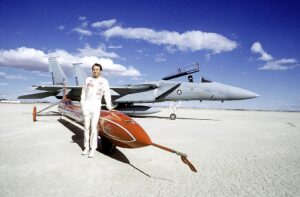 Needham, who was himself a former racer. Needham had broken a nine-year-old world land-speed record on the Bonneville Salt Flats the previous September. The car he drove had a 48,000-horsepower rocket engine and, to give it a little extra kick, a 12,000-horsepower Sidewinder missile.
Needham, who was himself a former racer. Needham had broken a nine-year-old world land-speed record on the Bonneville Salt Flats the previous September. The car he drove had a 48,000-horsepower rocket engine and, to give it a little extra kick, a 12,000-horsepower Sidewinder missile.
December 17th was a dry day with temperatures around 20° Fahrenheit. Because of the cold, Barrett would actually have to go faster than the 731.9 miles per hour required, in order to break the sound barrier under those conditions. He started the rocket engine and stepped on the gas. He counted to 12, pushed the button on his steering wheel to fire the Sidewinder, so he could go even faster. After he zoomed past a battery of timing devices, Barrett deployed a parachute to help him slow down. It took only a few seconds for Barrett to blast across the 5¾ mile long lakebed. Most of us would have a hard time wrapping our heads around that.
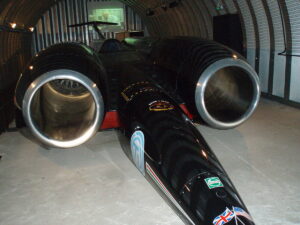
The run was perfect, but unfortunately, the radar speedometers on the ground malfunctioned. Instead of recording the Rocket’s speed, they captured the speed of a passing truck, which was only 38 miles per hour. They would have to look elsewhere for confirmation, and in the end, the speed estimate came from data by the Air Force, whose scanners seemed to indicate that the Rocket had “probably exceeded the speed of sound.” The controversy over how fast Barrett actually went is still disputed to this day. It took until October 1997 for another driver, in a British car called the Thrust SSC, to officially break the Mach 1 sound barrier.

